Related Tags
How to play chords like Neil Young (Part 2)
As we continue our look into the chord shapes and patterns that have helped make Neil Young an icon, it’s time to delve into how he adds harmonic richness to seemingly simple progressions.

Neil Young at London’s Hammersmith Odeon, 1976. Image: Erica Echenberg / Redferns / Getty Images
In his long songwriting career, Neil Young has touched on many different musical styles, but one thing that always sets his work apart from the crowd are chord sequences that have a harmonic richness which belies their apparent simplicity.
- READ MORE: How to play chords like Neil Young (Part 1)
Many artists with folk roots content themselves with the trusty major and minor chords, but for Young, major sevenths, sixths, minor sevenths and added ninths are a regular part of the vocabulary and allow him to add melodic interest to even the most basic structures. Elsewhere, slash chords are also a commonly used device to keep the harmony interesting in Young’s work – all adding up to a rich and unique chordal gumbo that’s part of why his music is so timeless and enchanting.
Figure 1
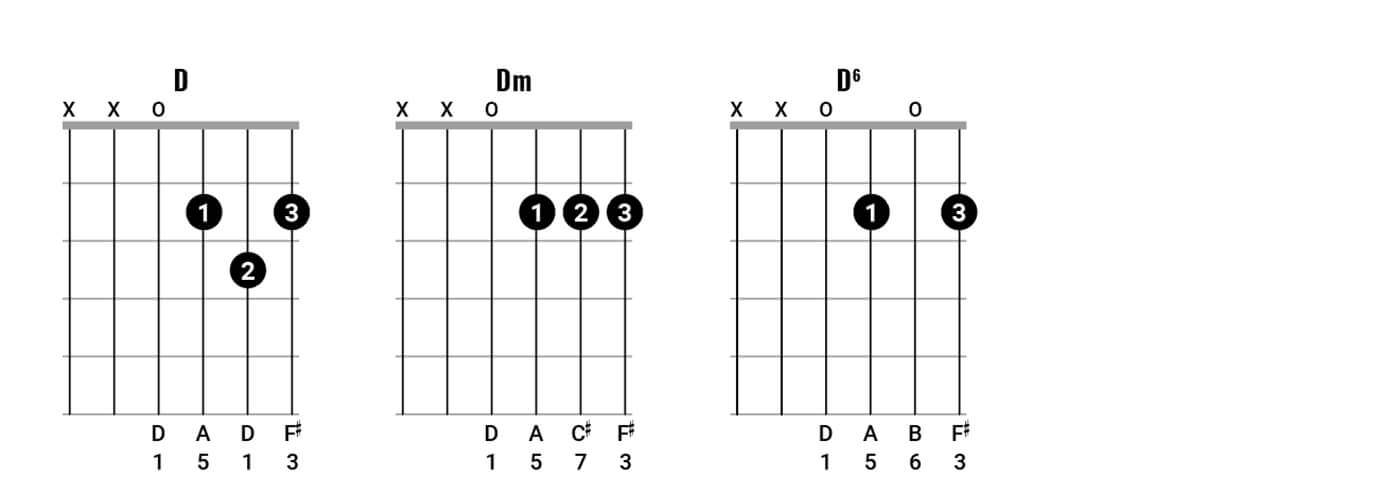
Strumming these chords on an acoustic, you could make it into a two-bar pattern by playing two chords per bar and returning to Dmaj7 after the D6 chord. Do your best not to hit either the A or E strings, and why not try picking the open D string as an intro or outro?
Figure 2
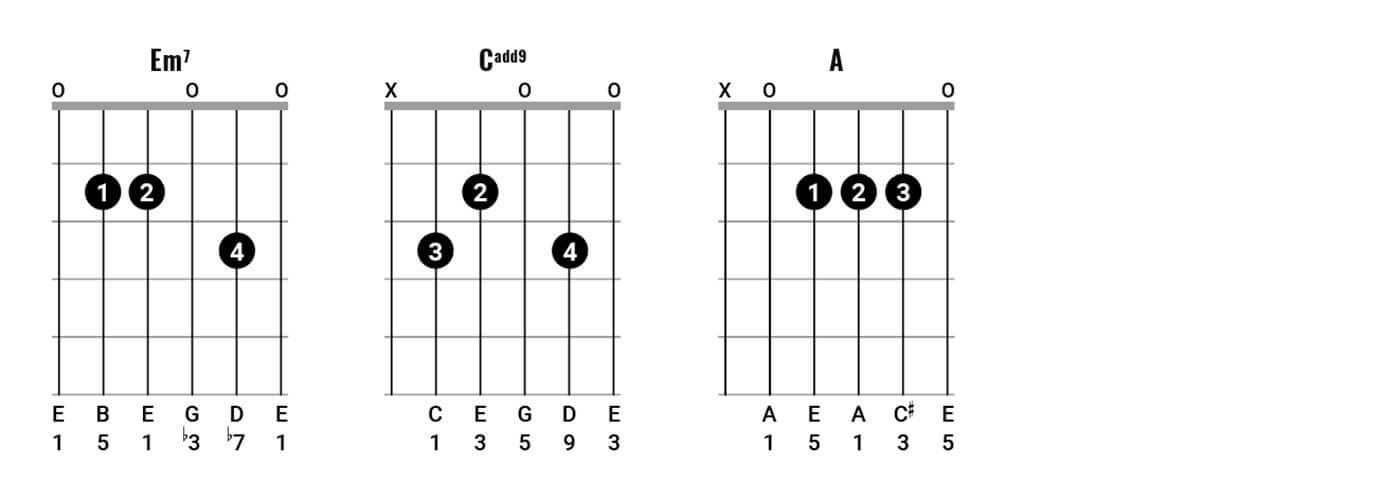
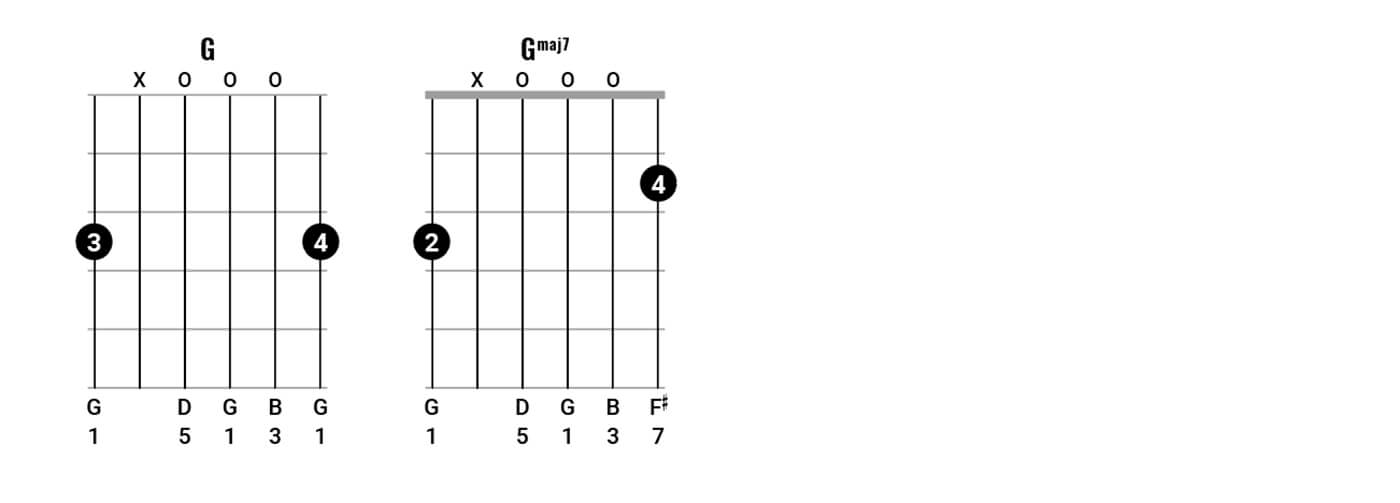
You could almost imagine this sequence as a continuation of what we’ve seen in figure 1, though we’d definitely spread the chords out a bit to make them feel a bit more relaxed, and would work well as a chorus. These examples show how Young integrates major and minor seventh chords into his songwriting without leaving his folk rock roots or ever sounding ‘jazzy’.
Figure 3
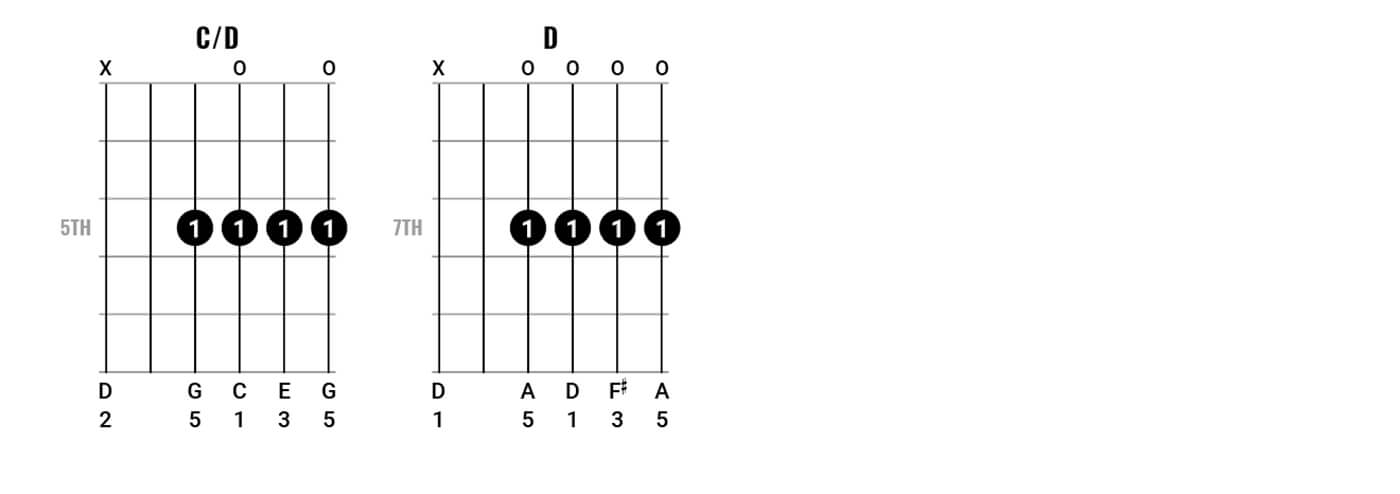
Young does not play in open tunings all that often, but this is an interesting example of a tuning known as ‘double drop D’ or ‘D modal’ – DADGBD. Play the low D string in the bass and strum the C chord at the fifth fret. Then repeat the pattern strumming the D chord at the seventh fret. In this tuning you get a major chord across the top four strings of the guitar, with the open D string adding tension underneath the C chord.
Figure 4
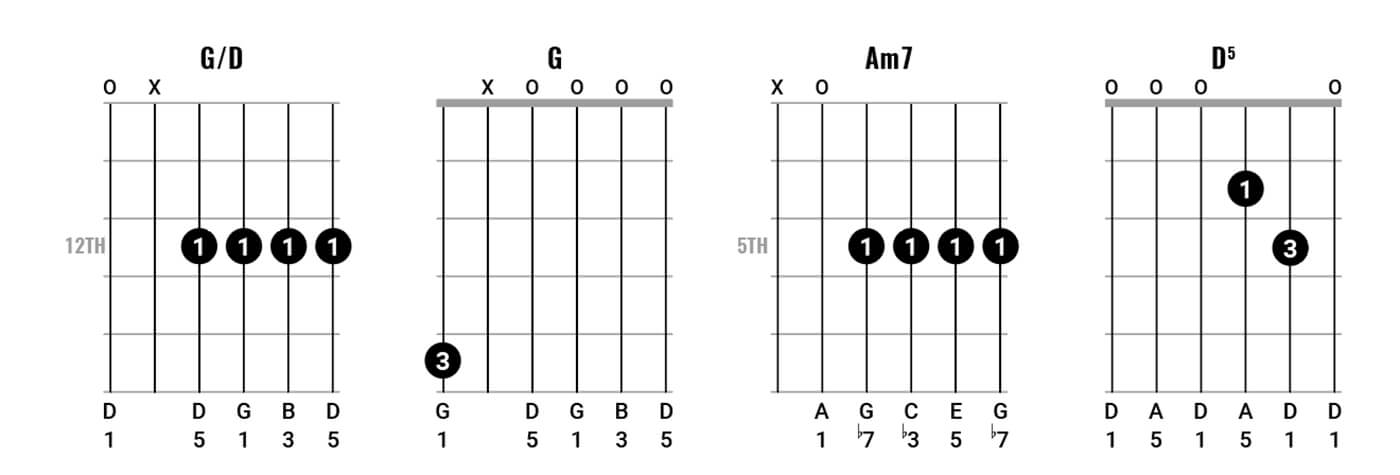
Another sequence in DADGBD, this one starts off on a high G chord, which can also be played as a harmonic. Be careful to pick the open A string underneath the Am7 chord or it will sound just like the C/D chord from figure 3. These lush major and massive D5 chord voicings would be impossible to play if it were not for the open string tuning.
Figure 5
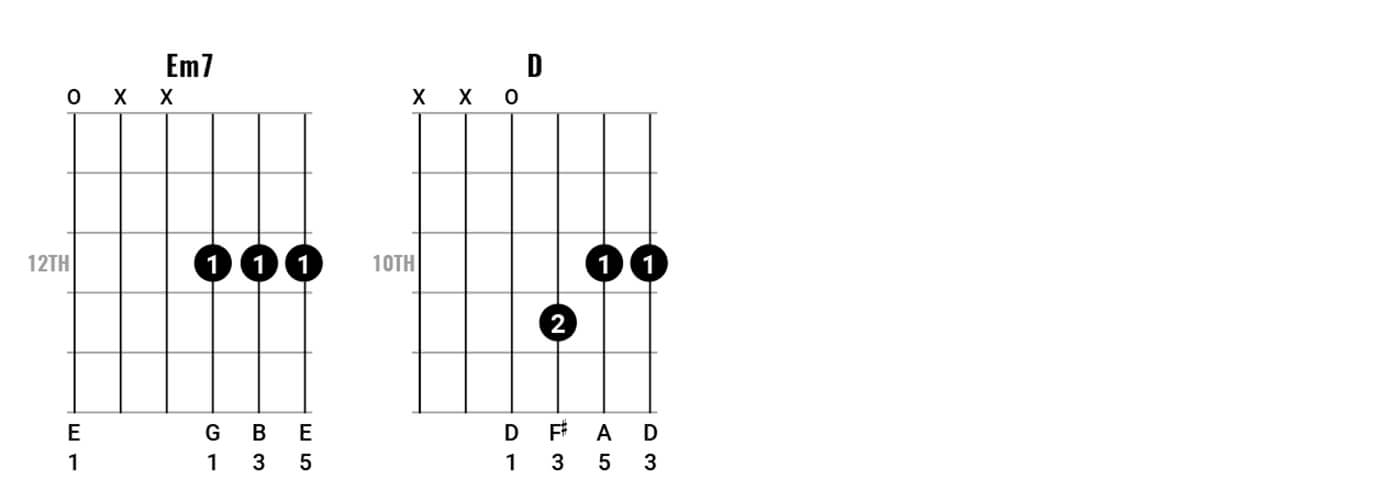
Pick the open E string and strum percussively at the 12th fret. You can use the tip of your index finger to mute the D string, but tidy strumming is required. Repeat the pattern using the open D string and the D chord at the 10th fret. This is an example of Young using two chords to create a repeatable riff. Focus on down strokes with your pick and try it with palm muting on the bass notes.
Figure 6

While Young is never likely to be classed as a blues artist, his music is full of blues inflections and occasionally overtly blues-like chord sequences. You could use the three chords here to make up a 12 bar blues in A; four bars of A7, two bars of D7, two bars of A7 and then E, D, A and E. Young is more likely to mess with the structure by playing eight bars alternating between A7 and D7 and then ending with four bars of E7 sharp nine. Experiment and see what works for you.
Figure 7
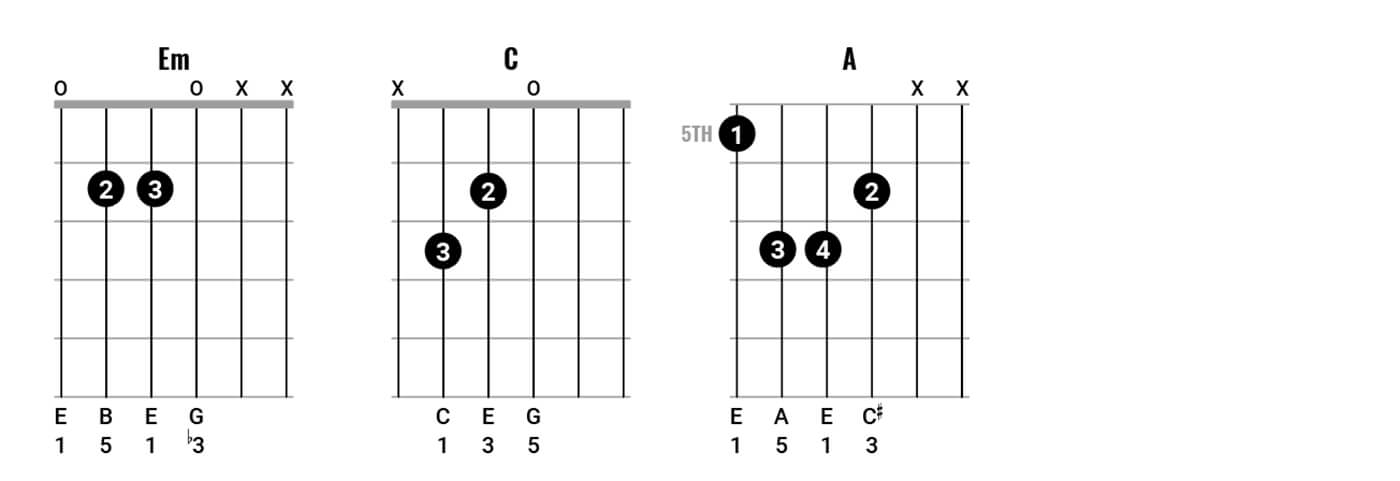
Much of Young’s music is solemn in tone and minor keys feature quite prominently, particularly E minor. We end our examples with a four-chord sequence – Em, C and two bars of A. These otherwise standard chords have unusually dark-sounding, low voicings. Palm muting and a slow tempo will add to the subdued mood. Settle into the groove and repeat many times for the authentic Neil Young vibe.
More lessons from your favourite guitar players here.
